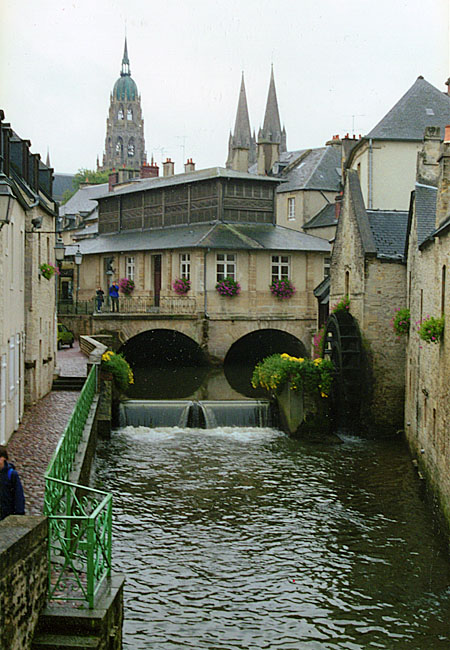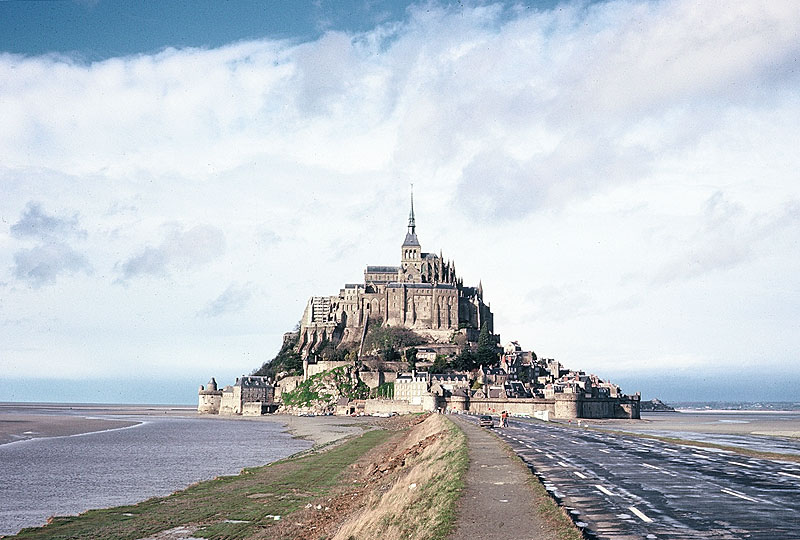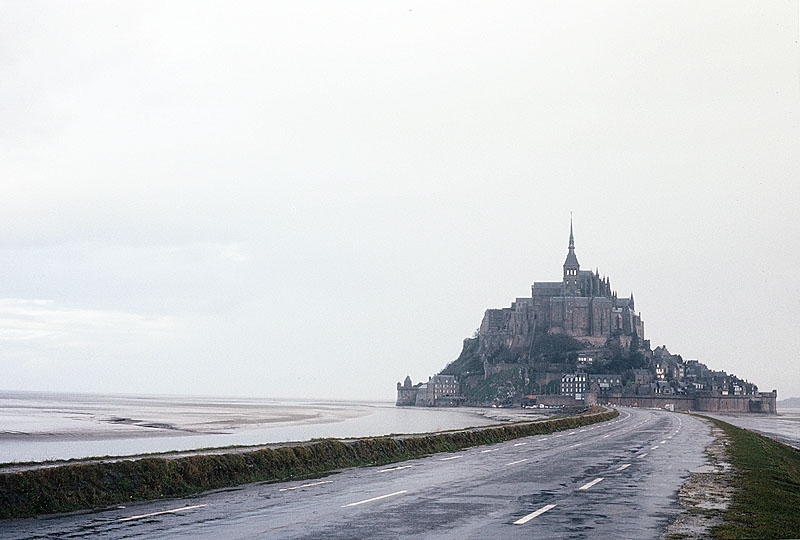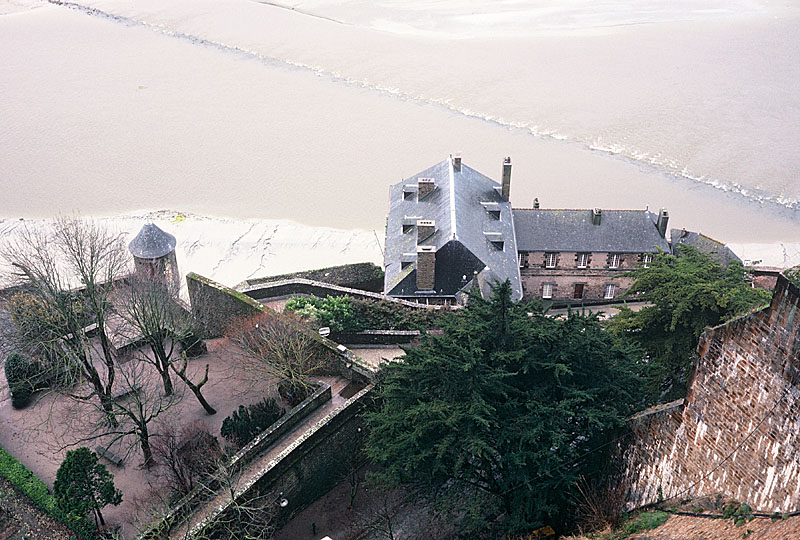
View of old stone house over creek in Bayeux with steeples of Bayeux cathedral (Norman Gothic style) in background. Bayeux is most famous for being the home of the Bayeux Tapestry which chronicles the Battle of Hastings led by William the Conqueror. The quaint town was the first to be liberated in World War II and was fortunate not to have been damaged during the war.

Mont St. Michel in sunlight. Mt. St. Michel has been called the “Wonder of the Western World” owing to its island setting, its rich, influential history, and the beauty of its architecture which combine to make it the most splendid of all abbeys in France. The granite island is about 984 yards round and 262 feet high.
Turning your back to the sea and raising your eyes to Saint Michel all shining with gold, you can see the triple architectural symbolism, on three levels. The levels correspond to the three strata of medieval society: at the bottom those who toil; in the middle those who govern, reign, fight kings; and at the top those who pray.
At the beginning of the eighth century, St. Michael appeared to Aubert, the bishop of Avranches. Aubert founded an oratory on an island then known as Mount Tombe which was occupied by secular priests. They were soon driven out and substituted by monks of the Order of St. Benedict who came from an abbey near Rouen. This is when the Mount was dedicated to the Archangel. The buildings date from the 11th century until the sixteenth century in Romanesque and then Gothic style (La Merveille). The first abbey was completed by the early twelfth century. The century of Henry V of England and Charles VII of France around the Hundred Years War was when Mt. St. Michel enjoyed its greatest influence although the English were in control. La Merveille or Marvel was the superb Gothic building on the north face of the mount used by the monks. The eastern block, the first to be built in the thirteenth century comprises from top to bottom the Refectory, the Guest’s Hall and the Almonry; the western block consists of the Cloisters, the Knight’s Hall and the cellar. The abbey was extremely well fortified and never fell to the enemy. People of all sorts made a journey of pilgramage to the Mount—nobles, rich, citizens, and beggars who lived on alms and were granted free accommodation by the monks. Thanks to donations from the Duke of Normandy and the pilgrims at the turn of the first millennium, the Mount over time became the fourth most important place of pilgrimage in the West after Jerusalem, Rome, and Santiago de Compstela (Spain).

Mont St. Michel when overcast. When I first arrived in the late morning, it was clear and sunny. Within two hours it rained and became very overcast.

View of looking down from the Abbey at Mt. St. Michel Island of house, surrounding wall, and beach.
